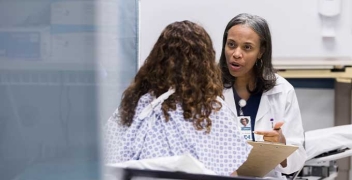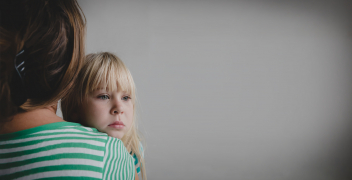Child Sex Trafficking
It’s difficult to imagine a situation where children are sold or traded as commodities. It is even more challenging, and heartbreaking, to imagine that these same children would be viewed as criminals, rather than victims. However, this scenario plays out with children forced into the sex trade industry.
Child trafficking, also known as commercial sexual exploitation or sex trafficking of minors, remains a complex and unaddressed form of violence against children and adolescents. As such, the scope of this issue is elusive, with estimates ranging from 1,400 to 2.4 million children in the US, although reasonable estimates include approximately 100,000 victims and 300,000 youth at risk.
Facts and Stats
- What is Child Trafficking?
Child trafficking, according to Trafficking Victims Protection Act (TVPA) of 2000, includes “recruitment, harboring, transportation, provision, or obtaining of a person for the purpose of a commercial sex act.” There are several important definitions associated with child trafficking:
- The sex trafficking of a child occurs when a commercial sex act is induced by force, fraud, or coercion, or in which the person induced to perform such an act has not attained 18 years of age.
- A commercial sex act is any sex act on account of which anything of value is given to or received by any person.
- To distinguish the child victim, he/she is commonly referred to as the victim of trafficking, prostituted child or domestic sex trafficked minor.
- The perpetrators of child trafficking are twofold; there are the traffickers, exploiters, or pimps, who are the individuals who “supply” the children; and the clients or johns, who are individuals who constitute the “demand” for the child.
- How Children are Recruited and the Types of Child Trafficking
Recruitment of children can occur in a variety of ways, whether it’s the outright selling of the child or manipulative promises of friendship or love. Some children enter into trafficking as a way to support the family financially or to support a family member’s substance abuse habit. Other children are lured by the promise of love, food, housing, or money and are manipulated into sex trafficking as a way to “earn” these promises. Some youth enter through engaging in “survival sex,” which often occurs for homeless/runaway youth as a way to secure basic commodities, like food or housing. Membership in a gang can serve as an entry point as well.
- Who is at Risk?
While victims of child trafficking are often thought to be foreign and female, in reality victims can be US citizens or foreign born, male or female, and of any racial/ethnic background. Despite the wide range of demographic factors, children who belong to vulnerable groups are more likely to become victims, such as those who have been previously abused, youth involved in the child welfare or juvenile justice system, homeless youth, LGBTQ youth, or those who experience familial poverty or other adversities.
- Challenges to Identifying Victims
The Institute of Medicine report “Confronting Commercial Sexual Exploitation and Sex Trafficking of Minors in the United States” determined that the following issues contribute to the challenge of identifying victims of child trafficking:
- The hidden, “behind closed doors” or on the “fringe of society” nature of child trafficking leads it to be overlooked and underreported.
- Victim identification suffers from a lack of policies and procedures and leads to many states arresting victims.
- When a child is identified as a victim, the child is often distrustful of providers (police, first responders, healthcare providers) and commonly do not view themselves as victims.
- Among healthcare providers, there is a lack of knowledge and awareness about trafficking and providers often do not know how to screen patients or make appropriate referrals.
- Warning Signs and Screening
What warning signs can alert healthcare providers, child welfare professionals, school educators, and other child-serving providers that a child maybe a victim of child trafficking?
Victims of child trafficking will often not self-identify as such, either out of fear or because they do not see themselves as victims. From the National Center for Missing and Exploited Children, the following are common warning signs:
- Excess amount of cash in their possession (reluctant to explain its source)
- Hotel keys and key cards
- Prepaid cell phone
- Sexually explicit profiles on social networking sites
- Homelessness (new or chronic)
- Not enrolled in school or frequent truancy
- Presents false identification or information about age, address, or parents/guardians
- Inconsistent when describing and/or recounting events
- Injuries/signs of physical abuse, neglect or self-harm (recluctant to explain)
- High number of reported sexual partners at a young age
- Signs of anxiety, depression, submissiveness, tenseness, nervousness
- Fear or avoidance of social interaction
- Presence or fear of another person (commonly a controlling older male / boyfriend)
- Loyalty to toward trafficker and may try to protect them from authorities
- Does not self identify a victim
While these warning signs provide a framework of awareness for youth-serving professionals, appropriate screening, especially when conducted by healthcare professionals, can identify victims of child trafficking. Physicians Against the Trafficking of Humans (PATH) suggests health professionals screen patients by asking the following questions:
- Are you comfortable? Do you need a blanket/gown/food?
- Are you OK? Are you in pain?
- Where do you live? Do you sleep, eat, and work all in the same place?
- Can you leave your work or job if you want to?
- Have you been threatened or hurt?
- Has anyone threatened your family?
Care should be taken when screening youth for sex trafficking. Because of the fear of police involvement or increased abuse from the trafficker, screening should only occur when the potential child trafficking victim feels safe and secure in the setting and trusts the professional. Screening needs to be conducted in a trauma-informed, non-judgmental manner. Maintaining awareness of language choice, facial expressions and body language should be taken into account to avoid conveying shock, disgust or disapproval of the youth’s responses.
Additional training and education on screening and intervention for child trafficking can be found at the Physicians Against the Trafficking of Humans website.
Watch a CHOP webinar that explores the role and responsibilities of social workers in identifying and assisting victims of trafficking.





